Mavic Crossmax Wheels
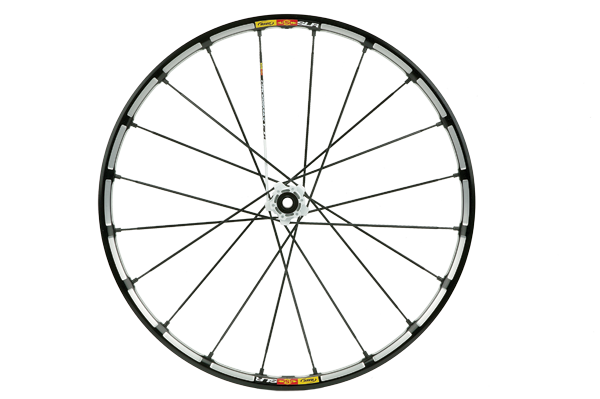 You’ve got to admire Mavic for their innovation. They’ve never been shy of going out on a limb and doing something quite different. Of course the results have varied, with some new concepts being chalked up as a glorious victories and a few others that they may prefer to forget…
You’ve got to admire Mavic for their innovation. They’ve never been shy of going out on a limb and doing something quite different. Of course the results have varied, with some new concepts being chalked up as a glorious victories and a few others that they may prefer to forget…
Back in 1996 they launched the Crossmax and in the years that followed it changed the way we look at wheels. Before the Crossmax aftermarket mountain bike wheels were built from individually sourced parts; rims, spokes and hubs. Mavic popularised the pre-built wheelsets that we now take for granted. Pre-built wheels allowed them greater design freedom, as their rims and spokes no longer needed to conform to any industry standards. I distinctly remember seeing the top Euros riding the first Crossmax at the 1996 Cairns World Cup; their all black colour scheme, massive box shaped rim and minimalist 26/28 spoke count made them really stand out back in the day.
In 1999 they got together with Michelin and Hutchinson to design theUSTtubeless tyre system. Again, their unique rim and spoke mounting system allowed the inner wall of the rim to be solid and airtight. The use of alloy spokes is another area where Mavic pushed and others followed.
Of course, for every winner there’s bound to be a few things that either flop or just don’t work at the time. Mavic’s Zap and Mechtronic derailleur systems are one such example; electronic gear shifting may be the next big thing on the dirt (and it already is on the road) but the technology simply wasn’t ready for the market back in 1992. They’ve also had more than a few bad reports on their tubular carbon Tracomp road spokes, although those issues are supposedly sorted now.
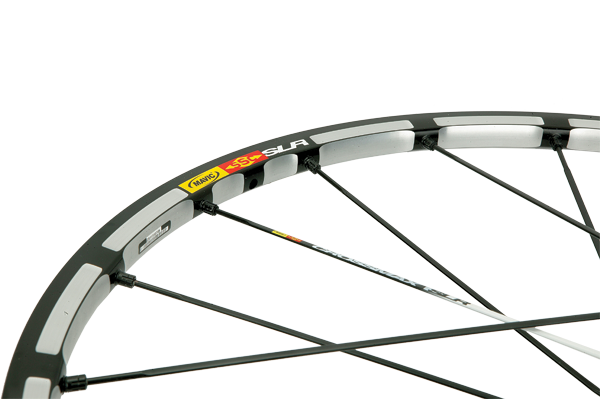
For some theFTSfreehub system – employed in most pre-2012 MavicMTBwheels – also stood out as a disappointment. While there was nothing technically wrong with the system, it required regular 1,000km or three-monthly servicing. There’s no denying that the freehub was quick and easy to overhaul, but many argued that the design was poor, as no other hub demanded such a frequent service interval.
Banished Bushings
Now the entire line of MavicMTBwheels has been revamped with theFTScassette replaced by the new ITS-4 design. The older hubs were maintenance hungry because the inner part of the cassette body ran on a nylon bushing. Any contamination would combine with fine metal particles from the cassette pawls and accelerate bushing wear. For some this led to a sticky cassette mechanism that would vibrate when coasting down the trail (I also know of people who have had no issues with theFTShub, even after years of neglect). Now the chunky looking ITS-4 rear hub runs on cartridge bearings throughout.
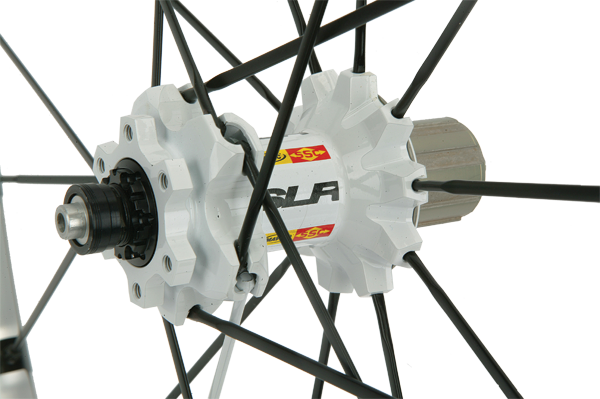
In addition to extending the service intervals, the redesign has been used to incorporate a range of other new features. The cassette mechanism now has four pawls inside as opposed to the two pawl system of old. While only two pawls drive at any given time, there’s now 48 engagement points—a 60% improvement from theFTSdesign.
With all of the new axle standards popping up, it’s good to see that the new hubs are quite adaptable. Both the XC race oriented CrossmaxSLRand the trail focussed Crossmax ST wheels come supplied with fittings for 9mm quick release, 15QR front and 12x142mm rear. You can even get adaptors for 20mm front axles if required. Swapping between axle systems is a simple matter of changing the end caps.
Moving out from the hub, you’ll again find Zicral alloy spokes used on all four Crossmax models—the race orientedSLRuses thinner bladed spokes while the other three use round ones. TheSLRused to have a narrow 17mm inner rim width but this grows to 19mm for 2012—the same inner width as the trail oriented ST wheels. In fact, both the ST andSLRuse the same rim extrusion, theSLRthen undergoes a 3-D machining process to chop a further 20g or so from the rim weight.

Their rims may wider, the hubs fatter, more versatile and better engineered, but the new wheels have actually lost weight. TheCrossmax SThas gone from 1,620g a pair down to 1,605g while theSLRgoes from 1,500g to an impressive 1,395g—our test wheels were 45g lighter than Mavic’s claimed figure for the SLRs.
We wanted to spend a decent amount of time on the new wheels to see if the revised hubs had resolved the durability issues. While the trail oriented ST wheels are probably the more practical choice for most people, the race focussedSLRwas the only one available when we kicked off this review in August 2011. As the hubs are the same, our findings in that area apply equally to both. Four months down the track and I’ve had these wheels fitted to every bike I’ve ridden—one virtue of the cross-compatible hub design. While this is not a proper long-term review, it has given me a good feel for how the new design performs.
In riding, the most obvious difference comes from the faster pick-up on the freewheel mechanism. There’s now an engagement point every 7.5-degrees, while this is not market leading it’s a lot faster than most and good enough to offer plenty of control when ratcheting the pedals in technical terrain. The freewheel also emits a nice loud buzz that seems to shout, ‘look at me, I’ve got expensive wheels!’
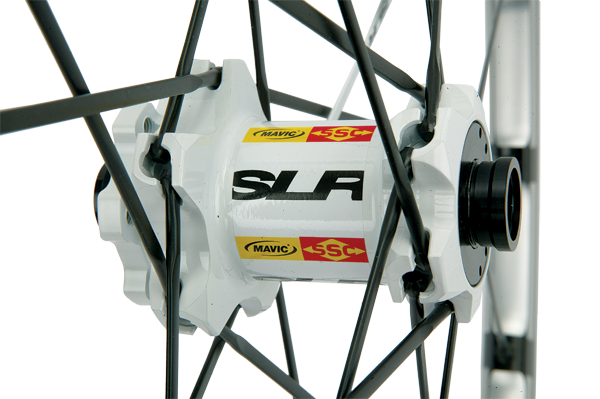
Stripping the rear hub down reveals a design that is quite similar to other high quality hubs. The main hub body spins on a pair of sealed cartridge bearings, and while the right-hand cartridge now sits much further inboard than their oldFTSdesign, it’s no worse than most other hubs. Compared to a DT 240 hub for example, the outer face of the wheel bearing sits 56mm in from the right side locknut on the Mavic and 53mm with the DT. It’s near enough to the same, especially when you take the larger diameter axle into account (17mm versus 15mm), and nobody complains about the durability of the DT hubs.
Like the 240 hubs, the cassette body uses two cassette bearings that rest on the main axle, but again the bigger 17mm diameter Mavic spindle promises less flex and greater precision as a result. The bearings themselves ran as smoothly as other high quality offerings and you can even fine-tune the preload—a feature absent from most cartridge bearing systems. If I was to nit-pick, I’d say that the external sealing isn’t as comprehensive as some but I can’t say that I had any troubles. It appears to be a well-trodden path that Mavic has followed with their cassette design, so I can’t foresee any real issues arising. As an added bonus, the ITS-4 system is as quick and easy to service as its predecessor, but now you should get away with a bit of random maintenance like any other good quality hub.
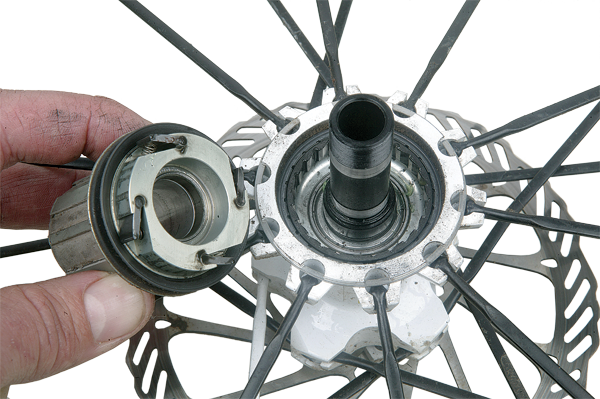
Specific Intentions
Mavic makes it pretty clear that theSLRis an XC race wheel. It’s promoted as ‘the lightestUSTMTBsystem’ and a ‘World Cup level lightweight system’. I used them for day-to-day trail riding with some rough and technical terrain to give them a solid test. They did cop a few dents; both in the bead hook from hitting things square on, as well as in the side of the box section where the inter-spoke milling has made the alloy very thin. Along with this, both wheels needed truing during the review. I definitely got the feeling that the SLRs would only last so long when subjected to regular trail abuse, and the ST version would be the more appropriate choice. The bead hooks on theCrossmax STare clearly thicker and the extra material around the rim can only help in fending off rock damage. I’d also put my money on the round spokes boosting the overall wheel stiffness.
TheSLRwheels are pretty light, so it’s only fair to expect a bit of lateral flex in them. However, they did seem to have more flex than other wheels in the same general weight area. I compared them with a fairly traditional 1,400g steel spoked tubeless compatible wheelset and found it took 10% less force to flex the Mavic wheels 5mm to the side. It’s enough ‘give’ to make them a comfortable proposition on a hardtail but a little less direct feeling when fitted to a nice stiff full suspension bike.
Mavic recommends theSLRfor tyres up to 2.3-inch, and that’s fine given their intended purpose. On the other hand, I feel the ST trail wheels could do with a wider profile, as the 19mm inner rim dimension is a touch narrow for tyres in the 2.3-2.4-inch range.
As you’d expect from the company that launched theUSTtubeless concept, the wheels were easy to run without tubes. TrueUSTtyres would mount with ease but I also had success with standard tyres and sealant. TheUSTlip on the inner rim profile did a good job at locking the tyre in place and preventing burping. Having a hole-free inner rim was good for peace of mind, as there is no fiddly tape to split or come unstuck.
As always, the Crossmax wheels represent a premium product with a premium price tag. Supplied with the various axle adaptors, valve stems and titanium quick release skewers, theSLRwheels sell for $1,499. The more practical choice – the Crossmax ST – comes with the same ancillary bits but steel skewers and sells for $1,199.

In pure performance terms, the SLRs accelerated and climbed like a 1,395g wheelset should—yes they are fast, but so are other wheels in this weight division. They flex more than some but the bead hook seems a little less dent-prone than other alloy rims that are pitched at the same market. Most importantly, the ITS-4 hub looks like a simple and well-engineered solution to their earlier durability issues—it appears that Mavic now has a worthy base for their unique and distinctive wheel designs.
Groupe Sportif (03) 8878 1000 / www.groupesportif.com




